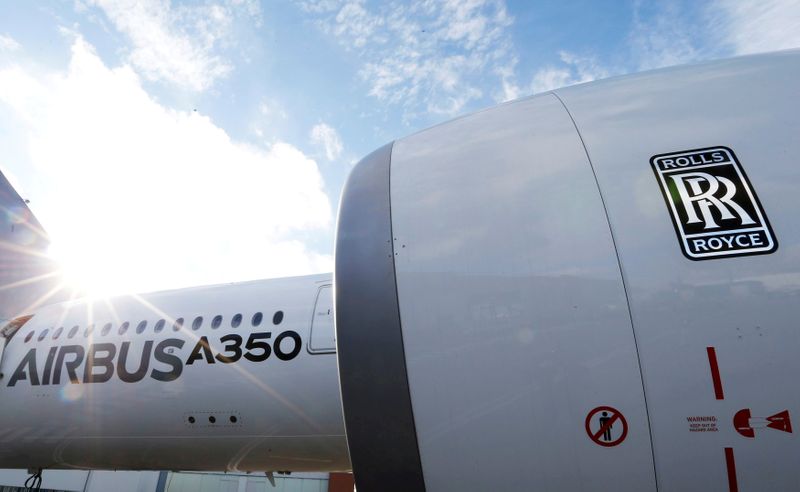By Sarah Young
LONDON (Reuters) – Rolls-Royce is pushing ahead with its new greener engine UltraFan for now, confident that airlines will need it in the post-pandemic recovery even as new technologies catch up, the head of the project told Reuters.
COVID-19 has sent aviation into meltdown. Passenger numbers have slumped, airline finances have collapsed and demand for planes has halted, pushing further into the future the date when either Airbus and Boeing will develop a new jet.
Without a new plane, UltraFan for now has no home, another challenge for the British company which was forced to raise funds last year to survive and is bleeding cash.
Alan Newby, Rolls-Royce’s director of aerospace technology and future programmes, said UltraFan, which will reduce fuel burn by 10% compared with Rolls’ most efficient current models, will still be needed.
“It’s the right solution pre-pandemic and it’s still the right solution now even as the world goes to look at more green solutions,” he said in an interview on Wednesday.
In the shorter term, though, UltraFan’s future is less clear. Rolls CEO Warren East told the Financial Times earlier in January that once testing of a demonstrator finishes in 2022, it will be put on ice until a new aircraft arrives.
Newby pointed out that between now and the end of testing in 2022 or 2023, things could change.
“If we see that application on the horizon, then we’ll carry on, if not, then we’ll pause,” he said.
Planes take years to develop and he said if one was to be flying by 2030, the UltraFan programme would “need to ramp up fairly soon to meet that customer demand.”
Some analysts have speculated that delays mean UltraFan, a geared gas turbine, could be overtaken by new low-carbon technologies either before it flies, or before it is established as a profitable new market for Rolls.
Newby said electric flying or hydrogen-powered aircraft, favoured by Airbus, could potentially fly short distance routes by the late 2030s, but the bulk of medium or longer routes will still be powered by “UltraFan type products”.
UltraFan, he said, is being designed to run not just on normal jet fuel but also sustainable fuel, that is fuel produced from waste products, boosting its low carbon credentials.
Another feature is that it will be scaleable, which Rolls hopes will open up a new market for it on single aisle jets which sell at higher volumes. The company’s current engines power widebody jets, which tend to fly long-haul routes.
At Rolls’ facilities in Derby, central England, Newby’s team are focused on building the first UltraFan engine this year, having completed most work on the underpinning technologies as part of a 500 million pound ($686 million) project started in 2014.
“It’s challenging times for the company at the moment so having something like this … seeing that first engine run, is massively exciting for all of us,” he said.
($1 = 0.7293 pounds)
(Reporting by Sarah Young. Editing by Mark Potter)





